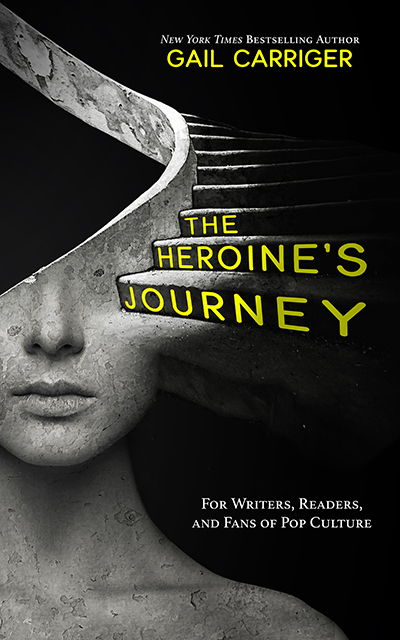So, fooling around on Pinterest recently I came across this image, Gentle Reader:

It’s cute right?
Except it’s also WRONG. Archaeology Kitten would say: straighten up that scarp. Walls, on a dig, are features of the site. (That is: they’re something immovable from the origin culture that archaeologists are excavating and will leave in situ. Artifacts are objects archaeologists are digging up that may be moved off the site. Here ends this Arch 101 lesson.) Test pits, like this one, have SCARP not walls.
OK, so what does that have to do with writing?
What this meme did was hit up against my very specific area of expertise. I’m an archaeologist by training (not an author, I know *gasp*), so all I saw was an error in terminology and therefore I didn’t find it funny. Or cute.
I stopped relating to it entirely.
Look. I devoutly believe that it’s my responsibility as a writer to get everything I can correct, or as correct as possible to existing truth or fact (if known). Which is to say, I strive for accuracy not precision.
And then I have to stop.
Here’s the rub for us perfectionists (and most writers are perfectionists):
There are things you will get wrong without realizing it. There are things you will type that you didn’t even know you had to research. There are things outside of your control (like when an editor ignores STETs).
This results in the 10% rule.
10% of the people reading your book will notice this kind of mistake and 1% will care.
The healthiest thing you can do as a writer?
Learn to let go of that 10%.
- 10% of the people who read your book will find a mistake of some kind.
- Sometimes they find what they think is a mistake, but isn’t.
- Sometimes they will leave a bad review because of this.
- Sometimes they are the type of person who likes to take umbrage and troll you about it.
About 1 in 100 of those people will actually write an email or leave a comment (for example, see here). (If you’re self-pub and they love your books, you might consider recruiting said individual to beta read for you, but I digress.)
It was a long road for me, but I’ve learned to accept that the 10% rule is always in place.
The more readers I have, the larger the number of people who fall into that 10%.
Why accept it?
Otherwise you’d never get a book out of me.

There is always someone out there who knows more about that specific thing than I do*. And if I infringe on their expertise, then they will get upset and it will impact their enjoyment of my book.
Just like me the archaeologist and that stupid little kitten photo.
I can try to forestall this by inviting experts to beta read for me. (For example, I had an academic expert in 1890s India read over the second half of Prudence. I also have a horse expert and a gun expert on call, because these are not my bailiwick but come up a lot in the Victorian era. I have sensitivity readers for my queer stuff.) I know some authors put teams of fan-experts together to consult regularly, particularly if they write military or procedurals and haven’t been in service themselves.
But in the end, I write fiction, and I want to write it quickly (well, as quickly as possible). That means learning to relax and not beat myself up about the things I didn’t know to research or didn’t catch.
(Although, I’m ridiculously proud that so far I haven’t gotten one expert error letter for Poison or Protect. No, that’s not an invitation.)

Which is ABSOLUTELY not to say that a self-pub author should allow herself to cop-out on copy-edits and proof passes. I devoutly believe that authors MUST hire a professional for one (if not both) of these steps.
However, I am saying that learning to relax about the 10% expert nitpicking will make you a much less neurotic writer.
Relax. Your primary job it to write it, and finish it.
Let go of the 10%.
But it’s still SCARP.
Your archaeology expert, signing off.

P.S. Yeah we authors tend to keep track of each other’s expertise. And yes, so far, a half dozen of my author friends have called me to ask me about archaeology stuff for some project or another. So there is that resource too.
* Thing I actually do know more about than any other human? SEM analysis of 8th-12th century Islamic glazed pottery from an industrial production site in Raqqa, Syria. For which I am the world’s last standing expert, and likely to remain so, since the site no longer exists.
10 More Installments of Gail talking about publishing?
- 10 Things About Publishing This Author Wishes Everyone Knew
- 30+ Blogs & Podcasts for Authors
- 7 Tips for Getting Over Writer’s Block
- What is an author style guide? How about a style sheet?
- How to Write (and Not to Write) an Author Bio
- The Pros & Cons of Cons
- 7 Side Effects of Being a Full Time Author
- Pen Names, Cover Art & Reader Betrayal
- Plot Versus Pace (Why That Book Sucks)
- Writing Humor
Yours (destined to die on that tiny tiny sword – which is probably pattern welded NOT Damascus steel ARGH),
Miss Gail
Find my books
Direct | Amazon | Kobo | Bookshop.org | B&N | Apple | Foyles | Mcnally Robinson | Angus Robertson
Here’s a printable Downloadable Checklist of ALL my books!
- Did you miss my latest release? Want more sneak peeks, free goodies, gossip, behind the scenes info? This goes to my Chirrup members, because I love them bestest. Sign up here.
BOOK DE JOUR!
- Tired of the hero’s journey?
- Frustrated that funny, romantic, and comforting stories aren’t taken seriously?
- Sad that the books and movies you love never seem to be critically acclaimed, even when they sell like crazy?
The Heroine’s Journey is here to help.
Multiple New York Times bestselling author Gail Carriger presents a clear concise analysis of the heroine’s journey, how it differs from the hero’s journey, and how you can use it to improve your writing and your life.
GAIL’S DAILY DOSE
Your Tisane of Smart . . .
“A morning visit should be paid between the hours of two and four p.m., in winter, and two and five in summer.”
~ Etiquette for Gentlemen
{those are my kind of hours}
Your Writerly Tinctures . . .
“Don’t worry about people stealing your ideas. If your ideas are any good, you’ll have to ram them down people’s throats.”
~ Howard Aiken
Quote of the Day:
“Drink your tea slowly and reverently, as if it is the axis on which the world earth revolves – slowly, evenly, without rushing toward the future.”
~ Thich Nat Hahn
Tags: Beginning Writers


Wise words! There is always someone who knows more (though not about SEM analysis of 8th-12th century Islamic glazed pottery from an industrial production site in Raqqa, Syria, obviously) and usually they are keen to pass on their knowledge! The thing I find hardest to let go of in my modest part of the writing world is when editors ‘fix’ things that I have written in a certain (apparently incorrect) way on purpose, but what can you do? Relax, I guess!
This is fascinating and helpful to this little person who allows criticism a bit too much weight!
You know that that (PoP) will be an accepted challenge by some even though it was not an invitation….